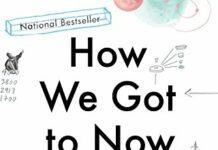
Ebook Info
- Published: 2021
- Number of pages: 320 pages
- Format: PDF
- File Size: 11.30 MB
- Authors: Steven Johnson
Description
“Offers a useful reminder of the role of modern science in fundamentally transforming all of our lives.” —President Barack Obama (on Twitter) “An important book.” —Steven Pinker, The New York Times Book ReviewThe surprising and important story of how humans gained what amounts to an extra life, from the bestselling author of How We Got to Now and Where Good Ideas Come FromIn 1920, at the end of the last major pandemic, global life expectancy was just over forty years. Today, in many parts of the world, human beings can expect to live more than eighty years. As a species we have doubled our life expectancy in just one century. There are few measures of human progress more astonishing than this increased longevity. Extra Life is Steven Johnson’s attempt to understand where that progress came from, telling the epic story of one of humanity’s greatest achievements. How many of those extra years came from vaccines, or the decrease in famines, or seatbelts? What are the forces that now keep us alive longer? Behind each breakthrough lies an inspiring story of cooperative innovation, of brilliant thinkers bolstered by strong systems of public support and collaborative networks, and of dedicated activists fighting for meaningful reform. But for all its focus on positive change, this book is also a reminder that meaningful gaps in life expectancy still exist, and that new threats loom on the horizon, as the COVID-19 pandemic has made clear. How do we avoid decreases in life expectancy as our public health systems face unprecedented challenges? What current technologies or interventions that could reduce the impact of future crises are we somehow ignoring? A study in how meaningful change happens in society, Extra Life celebrates the enduring power of common goals and public resources, and the heroes of public health and medicine too often ignored in popular accounts of our history. This is the sweeping story of a revolution with immense public and personal consequences: the doubling of the human life span.
User’s Reviews
Reviews from Amazon users which were colected at the time this book was published on the website:
⭐First off, I have to take the time to make fun of the people who are responding to interviews with Steven Johnson and claiming that he’s skewing live expectancy data by not accounting for the disproportionate impact of infant mortality on the metric: Bro – it’s addressed in the book, and data are presented in terms of life expectancy at birth, life expectancy at 20 years, etc…try reading it before you offer stupid criticisms.Now, onto the review: There’s nothing here that hasn’t been noted before, but the author does a good job summarizing the various advances that have lead to greater life expectancy in terms of their relative impact. What I find most interesting is the argument (with examples) that advances are rarely the result of the solitary genius having the ‘eureka’ moment, but almost always the result of the ‘ripening’ of knowledge based on the contribution of multiple efforts. It’s an easy read, and a great reminder of how much progress humanity has made in a relatively short period of time.
⭐Fascinating update to history of major social and medical advances.Reminds the reader that progress is a team effort, not all of the teammembers get credit, and genius inspirations are often accidental andthen take a lot of effort and luck to become widespread. The numberof deaths attributable to poor or bogus health practices in the pastis astonishing. And the resistance to change has also killed untoldmillions. And the author’s detail of the roles of government andindustries hindering or enabling the adoption of lifesaving solutionsis a critical point! Definitely worth reading.
⭐I read the author’s article in the NYT supplement on aging and immediately wanted his book. This is a well-written and researched exploration of why the average human life-span has doubled in just the last 100 years. The average lifespan up to the late 1800’s was only 30 years old. Remember that is “average”, so yes some people did live to 60-80 years, but 40% died in their first year and fewer made it past age 5. So the average was 30 years. Then it bifurcated with wealthy living linger because of factors like sanitation, diet, vaccinations; and more lately, seat belts. As these changes became the norm, the average for all wealth groups doubled in 100 years.
⭐This is not quite the book I expected and that is a good thing. The author does the expected in highlighting the singular achievement of the last hundred or so years–longer life of about 20,000 days. He addresses the traditional topics expected such as sewer systems, vaccinations, and modern drugs. However, he selects some topics that might escape the attention of most of us. He also moves beyond the surface appearances of the development to show the advocacy required to move an insight into acceptance. It is this last feature that I most appreciated.
⭐I love the subject matter and the work that when into it. Moreover, I appreciate the authors ability to take a big picture look and create a coherent”system” analysis. Even down to the ability to understand that advocacy of recognition/solution often plays as large a role as any in advancement. Thought he might go into the concept that experience (really failures) will also become a function of extra life—and therefrom we could see further exponential advancement just on the basis of knowing having wisdom and time to understand those experiential failures.
⭐I have no background in medicine or public health and yet I absolutely loved this book. It reads more like a novel than a textbook and with each page I couldn’t wait to find out what happens next. I learned so much more than I thought I would. And now I am even more in awe of scientists. And in awe of the various social activists who brought these discoveries and inventions to the mass public.
⭐Really explains the factors that have allowed the average life expectancy to double in the past century. How the factors affected us and debunk myths about others that we thought contributed to an expanding human population.
⭐This book follows the theme of the author’s previous book, “How We Got to Now: Six Innovations That Made the Modern World,” but focuses specifically on innovations that extended human life. I recommend it as strongly as I did the previous book. A fascinating and informative read.
⭐I had clearly thought I would like to read this book when I purchased it, but I was surprised to find just how interesting it was. Firstly the list of areas covered, which does not just cover medical breakthrough (vaccinations, antibiotics), but also methods of working (randomised control trials), regulation (whether car safety or the regulation of drugs), and public health measure (chlorination of the water supply). Secondly the way in which many players are needed for a medical discovery to be effective and take root (on vaccination, the original work on variolation of Lady Mary Wortley Montagu on which Edward Jenner could build, then later the emergence of the WHO and the eradication of smallpox through ring vaccination). And thirdly fascinating by-ways (Thomas Jefferson when President of the USA, just inoculating some 200 people with the smallpox vaccine in Virginia in the margins of his day job as President of the USA)…Strongly recommended.
⭐Really excellent examples and well told histories that show important steps humanity has taken: steps that have extended our lives and saved literally billions from early deaths. Fantastic that the author has shed more light shed on them. Unfortunately all is overlaid by the need to serve the priests of woke conventional wisdom: It’s wrong to ascribe major developments to single heroic figures (white males of course), figures from the colonial era had despicable views, the private sector isn’t responsible for lots of huge developments etc. etc. Some of this is stating the obvious – of course things weren’t all the work of single inventors and it’s hardly a revelation to point that out. Of course people in different times said things that wouldn’t be acceptable now. It’s the smug and hectoring tone with which it is done that jars. And yes the private sector didn’t do everything but without the taxes from private business there wouldn’t be a public sector. Lastly is the predictable lack of imagination with which it looks at our current situation. After pointing out how wrong people were to forecast population disaster because human ingenuity came to the rescue, it adopts the current equivalent scare of climate change to point to our likely coming doom without seeing the obvious lesson that because of exactly the kind of things set out in the book there won’t be a catastrophe. Would have been far better if the author had stuck to telling the fantastic tales he did than to feel obliged to deliver a tired and unimaginative lecture alongside. Still worth reading.
⭐Nothing like the facts to change preconceptions of the world. What a well researched book. better by far than the TV series.
⭐I found this a very entertaining and informative read. I particularly liked the occasional vignettes he tossed in – ostensibly not too relevant, but quite appropriate in the end.
⭐fascinating – I learned a lot
Keywords
Free Download Extra Life: A Short History of Living Longer in PDF format
Extra Life: A Short History of Living Longer PDF Free Download
Download Extra Life: A Short History of Living Longer 2021 PDF Free
Extra Life: A Short History of Living Longer 2021 PDF Free Download
Download Extra Life: A Short History of Living Longer PDF
Free Download Ebook Extra Life: A Short History of Living Longer





